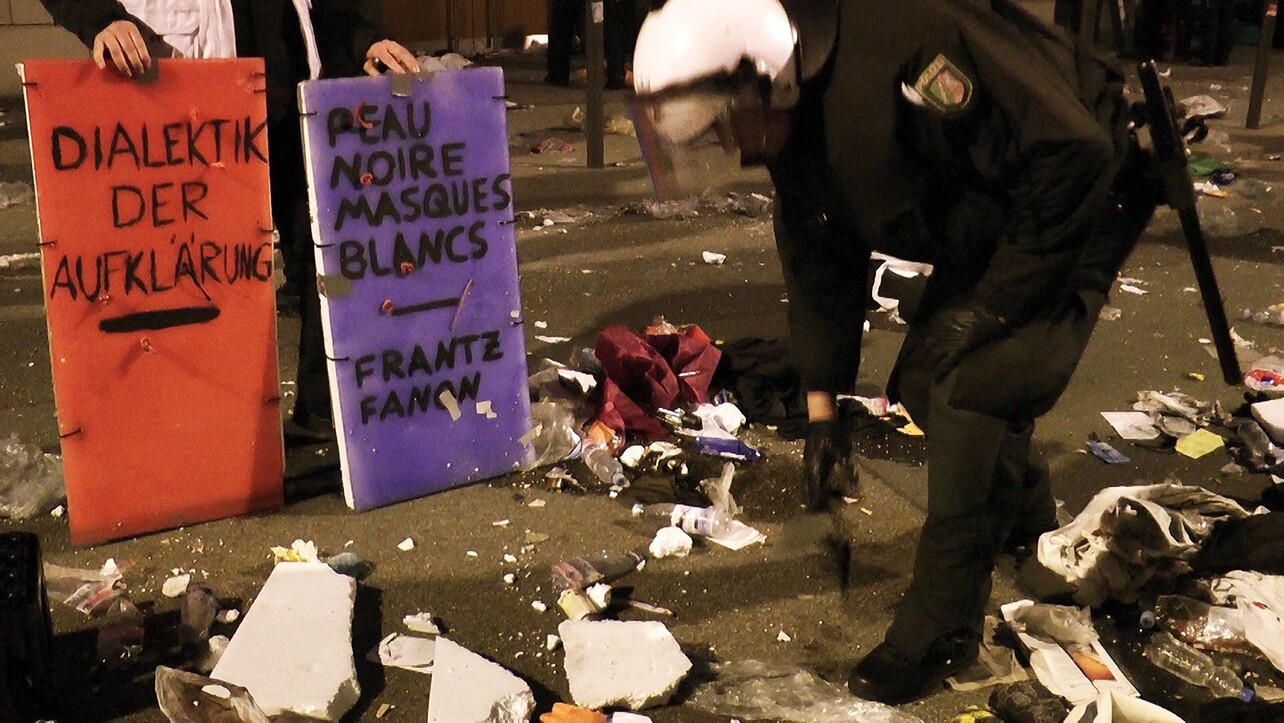
The aesthetics of dominance
At the exhibition “What is left?” Petra Gerschner stages a 12-meter-long red carpet with the glowing slogan “join the winning side—smash capitalism” to hint at the necessity and potentiality of a different society, thereby standing in opposition to dominant power systems and phenomena of exclusion. Meet the artist in conversation with one of the curators, Walter Seidl.
At the exhibition “What is left?” Petra Gerschner stages a 12-meter-long red carpet with the glowing slogan “join the winning side—smash capitalism” to hint at the necessity and potentiality of a different society, thereby standing in opposition to dominant power systems and phenomena of exclusion. Meet the artist in conversation with one of the curators, Walter Seidl.
Walter Seidl: Working on your installation Red Carpet, what were your thoughts considering the exhibition’s theme, What is left?
Petra Gerschner: Red Carpet is part of my work cycle “history is a work in process”. Official historiography is an expression of political constellations of interests and real power relations, it records the predominant view of itself. What we consider the present today will be history in the future and we are all part of the organisation of this societal process. The slogan ’join the winning side – smash capitalism’, which is illuminated on the red carpet, anticipates an option which could someday be the present after so many instances of capitalist failure.
Your work features strong political connotations. How important is political activism in art to you?
The production of images which give the desired meaning to the appearance of those in power is part of the strategies of political representation. One aspect is the red carpet – it is reserved for the parades of celebrities, political leaders, monarchs and military brass. This staging of symbolic elevation is marked off by barriers behind which the media and the public are kept as spectators. Just like in the so-called “red zones”, whose aim is to prevent the general public from participating in certain political events, the dominant practice of exclusion manifests on the red carpet. It is an activist experience to break through these structures of exclusion in a collective breach of rules, and it is interesting for me as an artist to create images which open spaces of opportunity for such endeavours.
To what extent is your art trying to deal with real political events and how important do you consider an aesthetic approach in this?
Specific configurations of power, which shape their own aesthetics, express themselves in concrete political conflicts. I find it fascinating to examine how these mostly antagonistic forms of expression develop, what functions they fulfil and how versatile they are. For my installation Red Carpet I used insignia of the aesthetics of dominance whose meanings are refracted by a decrypting form of intervention. The wall which is normally used to display logos and promote sponsors and patrons shows a video: You see uniformed police officers who seem to be searching for something in the light cast by their torches without orientation. They rifle through things left behind by people who were protesting the regime which deals with the European crisis and corralled by the police in Frankfurt am Main for more than ten hours. Styrofoam signs reading the book titles ‘Dialektik der Aufklärung’ (‘Dialectic of Enlightenment’) and ‘Peau Noire, Masques Blancs – Frantz Fanon’ (‘Black Skin, White Masks’) are being secured as evidence. In this situation the aesthetics of resistance thwart a bizarre action of state authority and develop their subversive potential.
Interview translated by Daniel Auer





